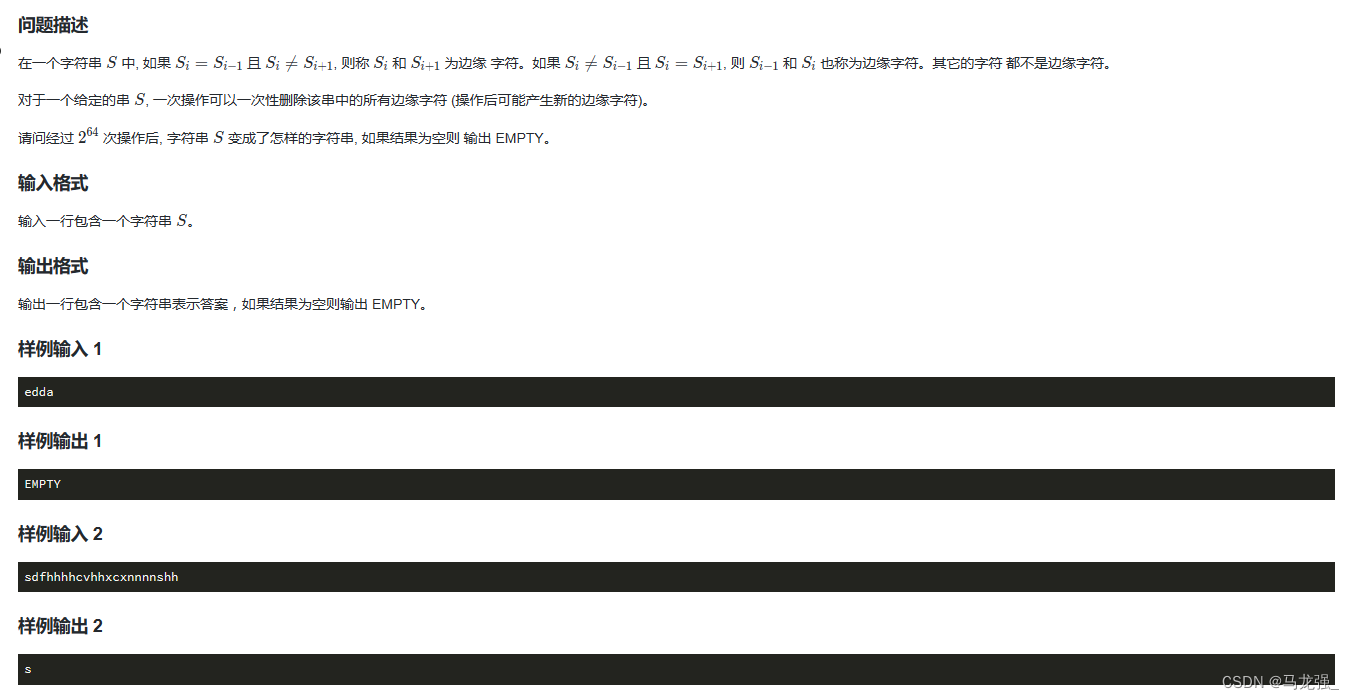1.len(返回字符串的长度):
text = "Hello, world!"
print(len(text)) # Output: 13
2.find(查找字符串在某字符串中是否包含):
text = "Hello, world!"
print(text.find("world")) # Output: 73.index(查找字符串在某字符串中是否包含):
text = "Hello, world!"
print(text.index("world")) # Output: 74.count(统计字符串中出现的次数):
text = "Hello, world!"
print(text.count("l")) # Output: 35.replace(替换字符串中的字符):
text = "Hello, world!"
new_text = text.replace("world", "Python")
print(new_text) # Output: Hello, Python!6.split(分割字符串):
text = "Hello, world!"
words = text.split(", ")
print(words) # Output: ['Hello', 'world!']7.join(多个字符串合并为一个字符串):
words = ['Hello', 'world!']
text = ", ".join(words)
print(text) # Output: Hello, world!8.capitalize(讲字符串的第一个字符转为大写):
text = "hello, world!"
print(text.capitalize()) # Output: Hello, world!9.title(每个单词首字母大写):
text = "hello, world!"
print(text.title()) # Output: Hello, World!10.startswith(检查开头字符串):
text = "Hello, world!"
print(text.startswith("Hello")) # Output: True11.endswith(检查尾部为某字符串):
text = "Hello, world!"
print(text.endswith("world!")) # Output: True12.lower(大写字符串转为小写):
text = "Hello, world!"
print(text.lower()) # Output: hello, world!13.upper(小写转为大写):
text = "Hello, world!"
print(text.upper()) # Output: HELLO, WORLD!14.lstrip(删除左侧空格):
text = " Hello, world!"
print(text.lstrip()) # Output: Hello, world!15.rstrip(删除右侧空格):
text = "Hello, world! "
print(text.rstrip()) # Output: Hello, world!16.strip(删除两侧空格):
text = " Hello, world! "
print(text.strip()) # Output: Hello, world!17.partition(按照某个字符串分割成三部分):
text = "Hello, world!"
parts = text.partition(", ")
print(parts) # Output: ('Hello', ', ', 'world!')18.splitlines(按照行分割):
text = "Hello,\nworld!"
lines = text.splitlines()
print(lines) # Output: ['Hello,', 'world!']19.isalpha(判断字符串组成是否全部为字母):
text = "Hello"
print(text.isalpha()) # Output: True20.isalnum(判断字符串中是否只包含字母或者数字):
text = "Hello123"
print(text.isalnum()) # Output: True21.isspace(判断字符串中是否只含有空格):
text = " "
print(text.isspace()) # Output: True22.python双向链表的使用
在Python中,您可以使用 collections.deque 模块来实现双向链表。collections.deque 是一个双端队列,支持从两端快速地增加和删除元素,因此非常适合用作双向链表的实现。
from collections import deque
# 创建一个空的双向链表
dll = deque()
# 在链表的末尾添加元素
dll.append('a')
dll.append('b')
dll.append('c')
print("双向链表:", dll)
# 在链表的开头添加元素
dll.appendleft('x')
dll.appendleft('y')
dll.appendleft('z')
print("双向链表:", dll)
# 从链表的末尾移除元素
dll.pop()
print("双向链表:", dll)
# 从链表的开头移除元素
dll.popleft()
print("双向链表:", dll)2022蓝桥杯大学B组python题:消除游戏

解题代码:
N=10**6+10
pos=[]
l,r=[0]*N,[0]*N
st=[False]*N
s=input()
n=len(s)
s="@"+s+"@"
# 构建双向链表
for i in range(1,n+1):
l[i]=i-1
r[i]=i+1
# 查找所有边缘字符
def check(i):
if s[l[i]]=="@" or s[r[i]]=="@":
return
if s[l[i]]==s[i] and s[r[i]]!=s[i]:
pos.append(r[i])
pos.append(i)
if s[l[i]]!=s[i] and s[r[i]]==s[i]:
pos.append(l[i])
pos.append(i)
def remove(j):
r[l[j]]=r[j]
l[r[j]]=l[j]
# 删除j结点,置为True
st[j]=True
for i in range(1,n+1):
check(i)
while pos:
ne=[]
for p in pos:
if st[p]:continue
remove(p)
ne.append(l[p])
ne.append(r[p])
pos=[]
for e in ne:
if not st[e]:
check(e)
ans=""
for i in range(1,n+1):
if not st[i]:
ans+=s[i]
if ans:
print(ans)
else:
print("EMPTY")




















 3226
3226











 被折叠的 条评论
为什么被折叠?
被折叠的 条评论
为什么被折叠?










